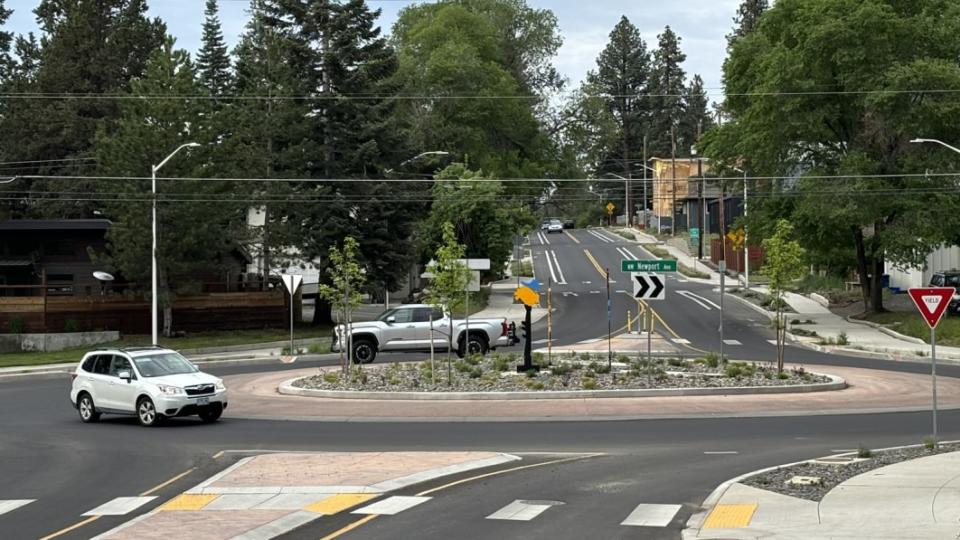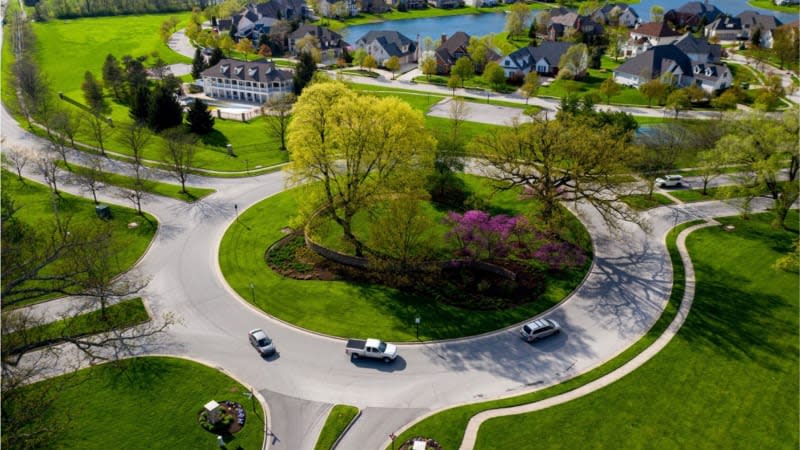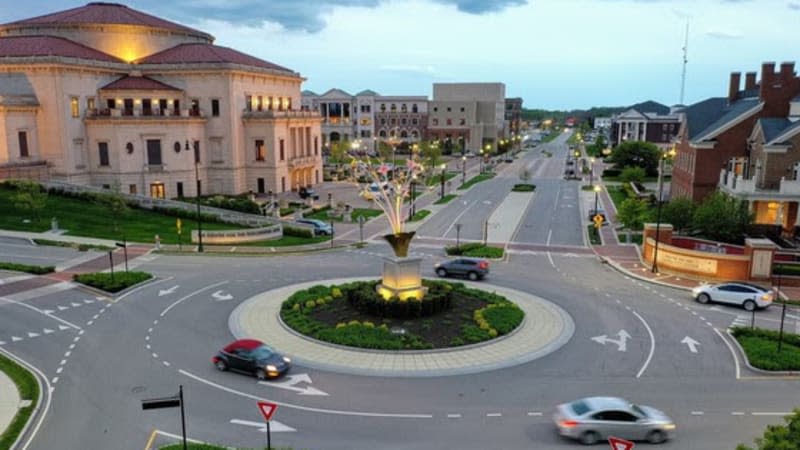I spent a week in a city filled with roundabouts. It was delightful

Roundabouts are usually thought of as one of those silly European things, like tiny cups of coffee and socialized medicine. It's foreign and not something for Americans. Except that there are a handful of American cities that have not only installed roundabouts, but have pretty much adopted them whole-hog, whenever possible as the default means of traffic control. They are wildly better off because of it.
The municipal king of the American roundabout is Carmel, Indiana, a suburb north of Indianapolis pronounced like the candy and not phonetically. I spent my high school years in Indianapolis and often found myself driving through Carmel. Back then, though, from 1996 to 2001, I recall Carmel as being rife with two-lane country roads and stop-sign intersections that tended to cause gridlock for the growing suburb (only 37,000 lived there back in 2000). Although the first roundabout was technically built while I lived there, it was in a private development, so I effectively experienced a Carmel with zero roundabouts. Today there are 140 of them in a city of about 102,000, which also borders one with nearly 1 million. By 2025, it will have only one stoplight.
Part of the appeal of roundabouts for Carmel was that it could keep those two-lane roads.
"We don't have to pave over paradise. We can keep our roads more narrow, and that's better for the environment," Mayor James Brainard told CBS News in 2022. He continued while taking a reporter going through a standard intersection. "A roundabout would have moved 30 cars through in the same amount of time."


Two of Carmel's 142 roundabouts
That might be a wee bit of hyperbole, and his additional claim of roundabouts also being better for pedestrians is softened slightly by Carmel recently announcing changes to its roundabouts to include slower posted speed limits within 250 feet of roundabouts to slow cars down and give drivers more time to see pedestrians at crossing points. Nevertheless, the Insurance Institute for Highway Safety found that Carmel's roundabouts reduced the number of crashes resulting in injury by nearly half, with busy intersections such as those at highway exits by 84%. Data such as these are certainly a big reason why roundabouts are among the projects favored by the bi-partisan infrastructure law due to their safety benefits.
While I have yet to experience the roundabout majesty of modern Carmel, I did spent last week in Bend, Oregon, the roundabout capital of the Beaver State. It has roughly the same population as Carmel, but it's a stand-alone city with a historic grid as opposed to a suburb and it likely doesn't process the same volume of traffic during commuter hours. As such, only has a pittance of roundabouts compared to Carmel, but with 42, that's still a ton of roundabouts.

 Yahoo Autos
Yahoo Autos 